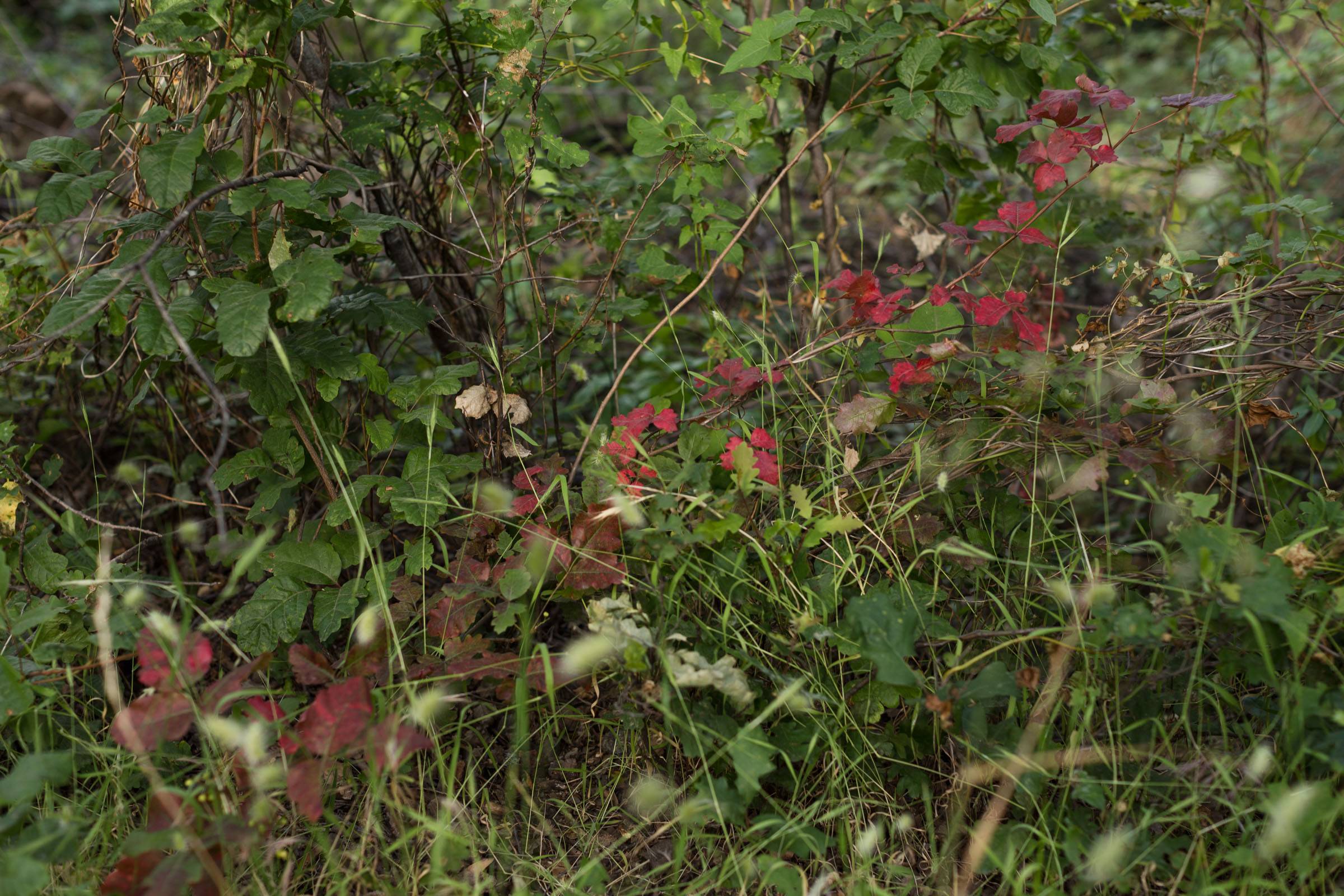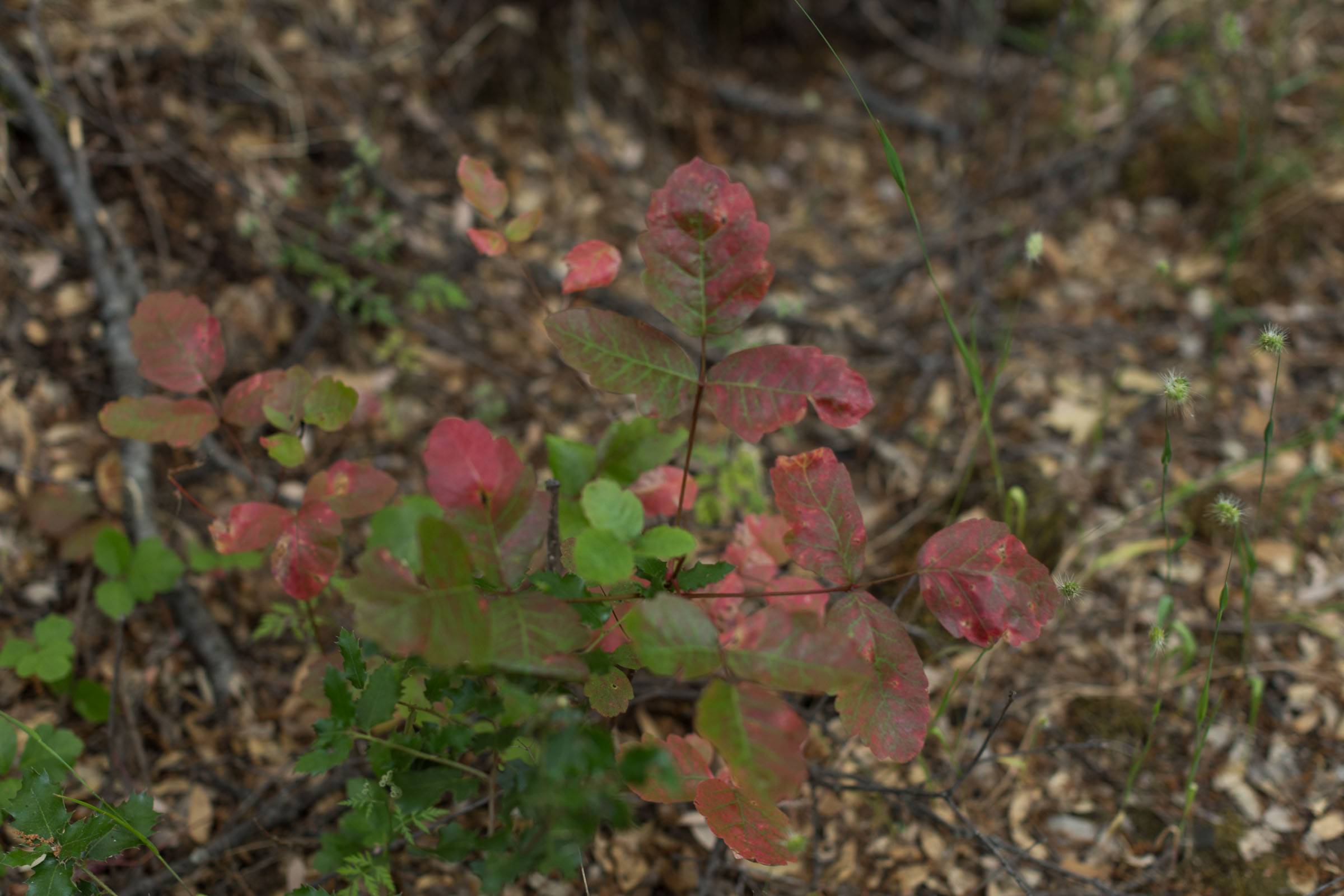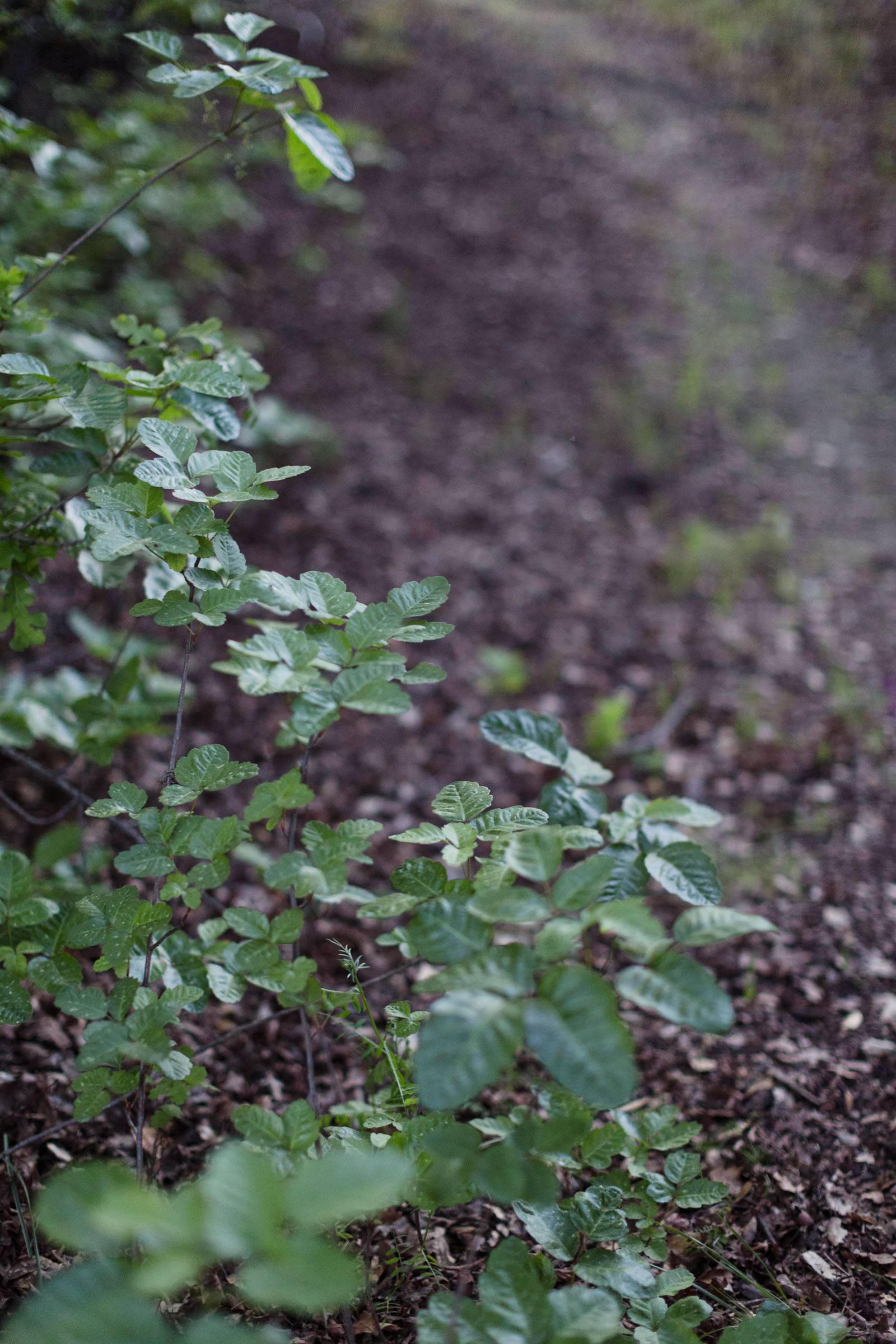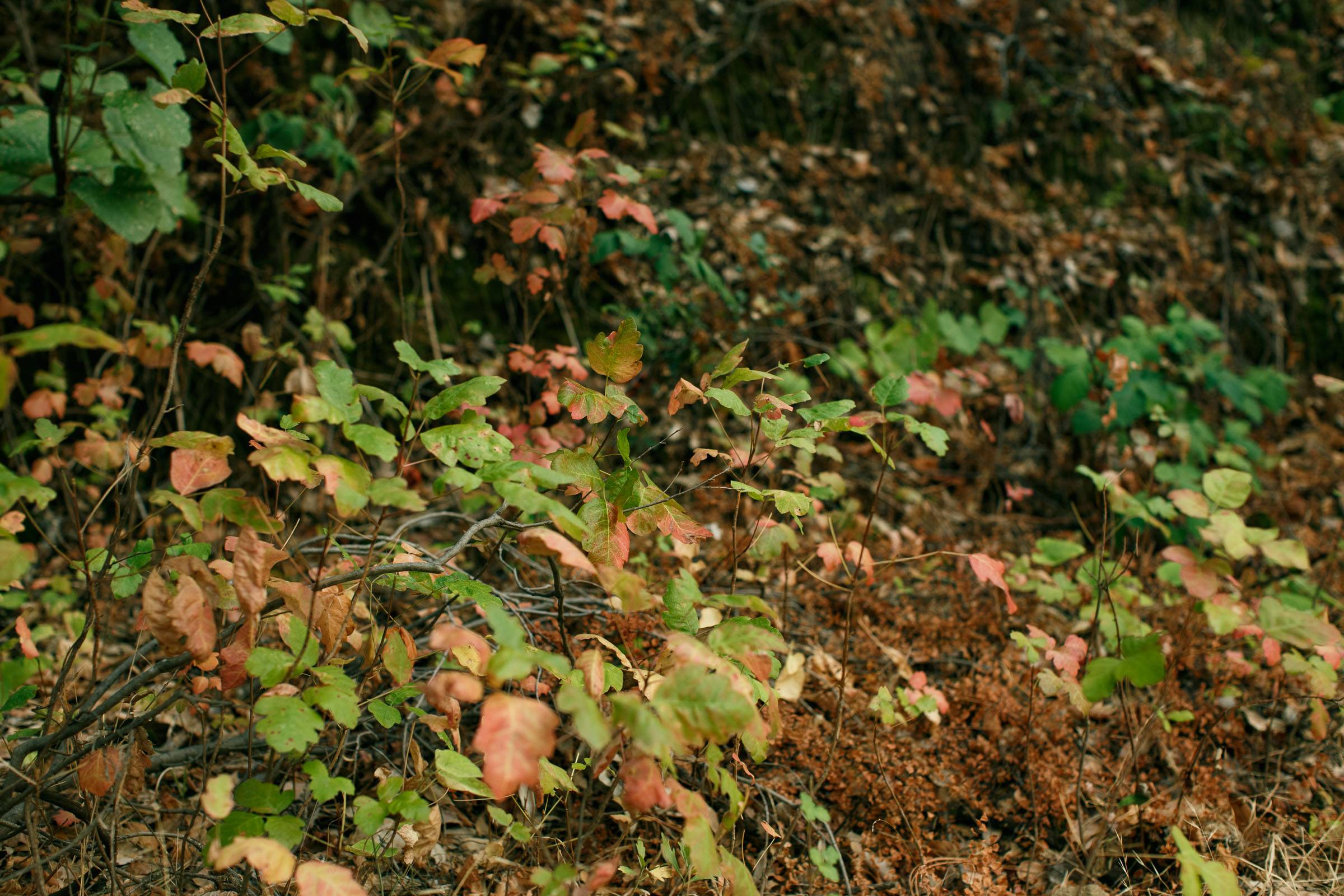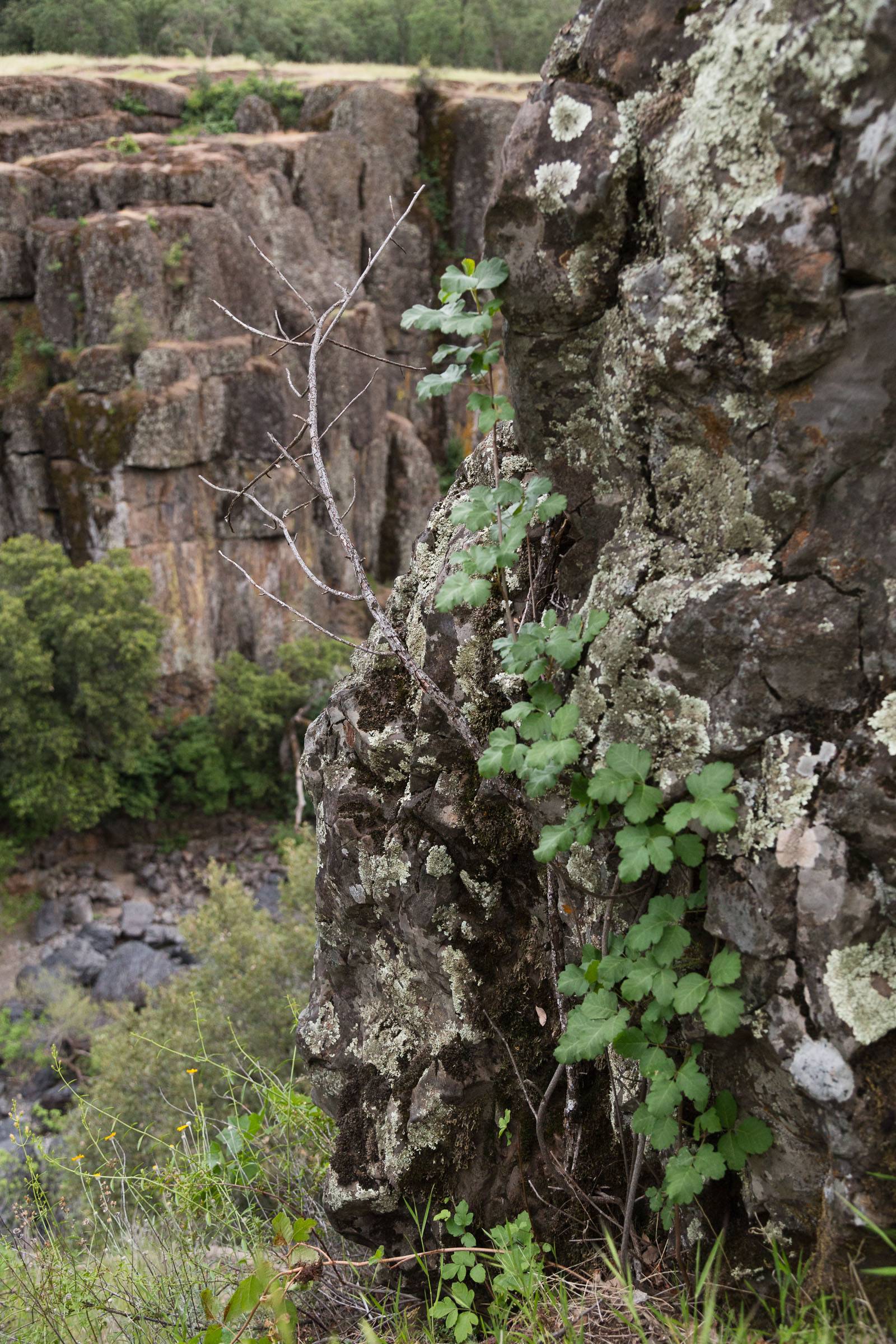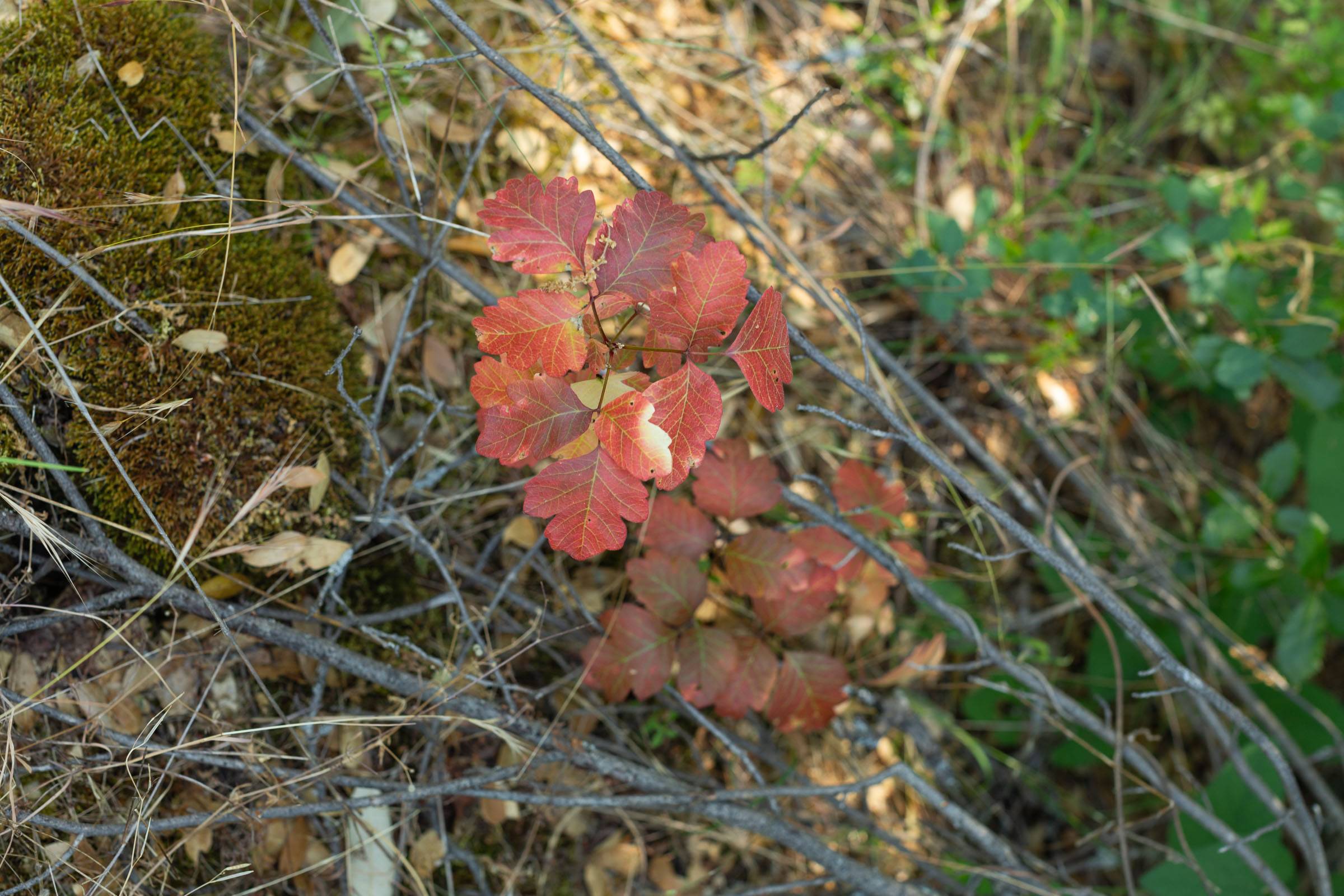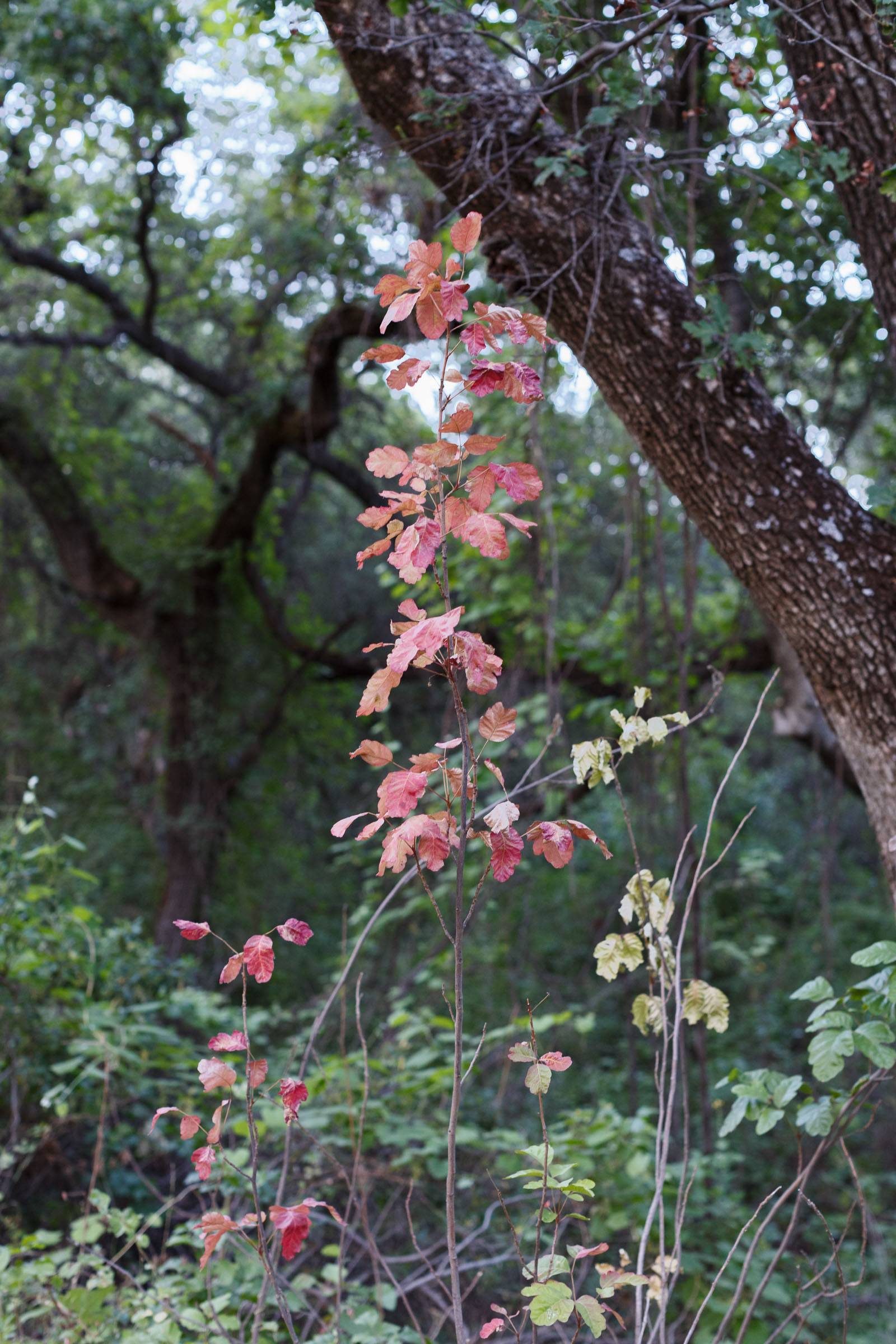Last Updated on July 9, 2024 by Curtis Pope
The park is a magical place, but please beware when hiking, poison oak is in Upper Bidwell Park.
It can cause an allergic rash from the oily substance on the plant, urushiol, which can be quite severe. Poison oak can appear as a vine, bush or even look like a small tree starting to grow.
The leaves will be colored green in the early spring and then change to reddish hues from late spring to fall. And the oily substance can be found on the branches as well, so be aware year-round.
Touch Me Not Saying
“Leaves of three, let it be”.
Poison oak is often located along trails and can brush against arms, legs and clothing, especially when on trails with less foot traffic. Upper portions of the Yahi Trail may have poison oak drooping far over the trail in some spots.
Side trails, such as those leading to swimming holes may have poison oak nearby, as well. When hiking in the park, it’s always best to look ahead on the trail to assess the next set of plants you are walking past. The best practice is to keep an eye out for it at all times, and dress accordingly.
Poison Oak Safety
Taking precautions to avoid poison oak should be on the mind of anyone hiking into Upper Bidwell Park. Be sure to look ahead on the trail and consider wearing long sleeves, hiking boots, socks, long pants and even gloves to be safe. Keep a watch for leaf patterns as you walk the trails. After your hike, safely remove, and wash all of your outer garments that may have contacted poison oak.
If you locate a trail that has poison oak vine across it, find a long stick, away from the area, and use it hold poison oak branch out of the way for your hiking party, then pass through the section. Toss the branch away from the trail so it’s not picked up by others.
